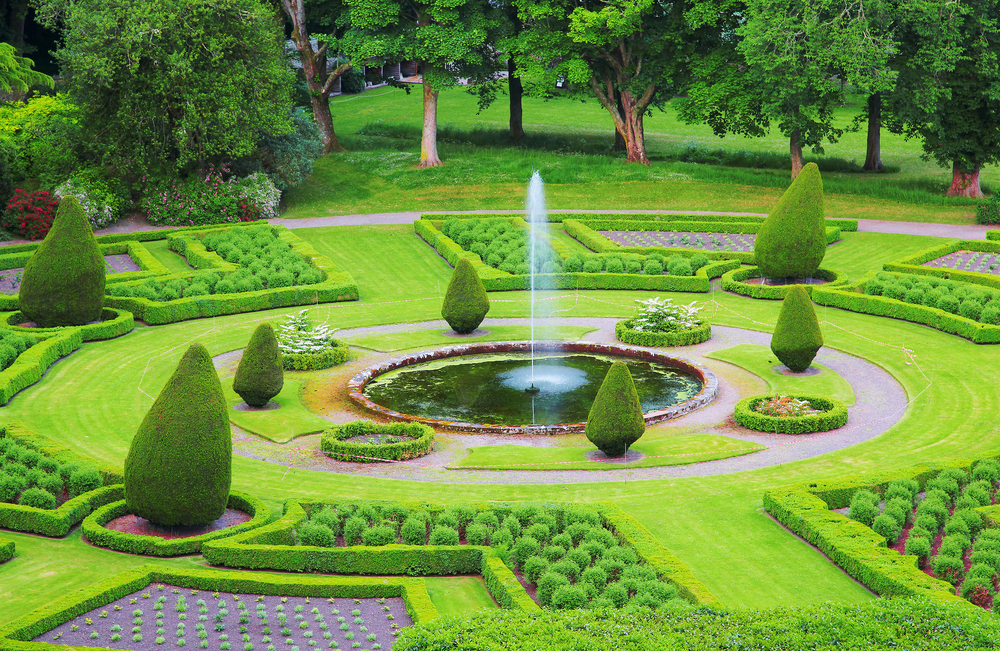A garden is essentially a carefully planned outdoor space, generally outside, placed as an ideal place for the display, cultivation, or entertainment of various forms and species of flora and fauna, as well as their respective fruits or flowers. The single characteristic defining even the wildest of gardens is total control over the entire environment within it. Nature abounds in all its glory: from the sound of chirping birds to the activity of crawling insects, everything can be observed in every detail, with no unwanted interference. Thus, for a true garden connoisseur, it’s not just a matter of finding attractive plants and flowers; it’s also about being able to observe and appreciate everything that nature has to offer in its purest form.
Gardening is a hobby that dates back to prehistoric times. Some evidences suggest that gardening was in fact discovered around 6000 BCE in Egypt, though other sources suggest its invention much earlier. The actual techniques of gardening have been widely debated over the years. However, one thing is certain: ancient peoples realized the potential value of gardens in enhancing the productivity and survival of their lives, as well as that of their households. In many parts of the globe, gardens comprise the primary living space of inhabitants and are thus important to the social structure of modern society.
A “rock garden” may be described as a garden that consists solely of rocks or other natural materials, laid out in a landscape design that aims to achieve a natural look, without having to resort to artificial landscaping. Rock gardens can be made from any number of materials, but their main constituents are stone and soil. In terms of design, a rock garden may contain plants as well as ornamentation, but the plants should preferably be small and low-lying, since the rocks in the garden may also serve as barriers against predators. Ornamental features are widely used, but care must be taken to avoid creating an “artificial forest,” since there is no such thing as natural fertilizer.
An “artificial” or “artificial-looking” garden can be made from a lot of different materials, including bricks, stones, ceramic tiles and gravel, but the most commonly used materials are concrete, clay or plastic. For example, the bricks used to build a rock garden may be lined with grass and stones, while the clay ground cover may be used to add extra dampness or to protect plants from damage by birds’ droppings, deer’s hooves, etc. Meanwhile, plastic is often used to protect the plants from harsh weather conditions, such as heavy rainfall or snowfall. Herbs may also be used to add aesthetic appeal, such as herbs (such as basil) that are good for cooking, as well as herbs (such as chives) that have great medicinal value.
A “vegetable garden” is normally defined as a landscape filled with vegetable plants, but this term is not always used in the strictest sense. In fact, a vegetable garden can be a container garden that may contain fruits, flowers or vegetables, depending on how extensive the grower’s imagination is. In order to get started planting an ornamental or decorative garden, you need to know at least some basic information about the different types of plants used in landscaping. Ornamental plants include shrubs, vines, trees and flowers, while vegetables include fruits, vegetables, herbs and crops. The plant family in which the plants belong is usually referred to as the “family” of the plant, which may also consist of one or more subsets.
The two most common types of garden are flower gardens and vegetable gardens. Flower gardens are typically arranged to showcase the beauty of various species of flowers. Vegetable gardens are designed to grow produce such as fresh vegetables, fruits, herbs and vegetables. Other kinds of ornamental gardens, such as bird Gardens, are popular choices for people who enjoy gardening but do not have time to put into tending to their plants. Whatever your preferences, there is a garden style to meet your needs.

